Myofascial release therapy is like a puzzle, with the body’s fascia as the pieces to be joined together. Fascia is a type of connective tissue that can become restricted due to physical trauma or microtrauma, leading to pain and stiffness. Myofascial release therapy involves hands-on massage and stretching techniques to reduce tension patterns and restore symmetry in the body. This article will explore myofascial release therapy, how it works, and its benefits for relieving pain and restoring normal movement.
Key Takeaways
- Myofascial release therapy is a technique physical therapists use to optimize movement and improve the human experience.
- Fascia is the soft tissue component of the connective tissue system that surrounds and connects every cell in the body.
- Myofascial release therapy helps reduce abnormal pressure, tone, spasms, and pain in the body.
- Myofascial release therapy involves intense massage and stretching of the tissue to eliminate knots and relieve stiffness.
Understanding the Basics of Myofascial Release Therapy
 Myofascial release is a technique used by physical therapists to optimize movement and improve the human experience, which involves identifying and treating stiff areas through massage and stretching. Myofascial release therapy focuses on the fascia, or connective tissue, surrounding muscles, bones, and organs. Trigger points are identified to apply manual therapy techniques to release tension. Benefits of the myofascial release include improved mobility, reduced pain, and improved posture. Self-myofascial release techniques can be performed at home using foam rollers or other myofascial release tools. These methods relieve muscle soreness and stiffness while aiding in recovery after physical activities. Myofascial release is a safe technique that can improve overall physical health when performed correctly by a professional therapist with knowledge of body mechanics and anatomy.
Myofascial release is a technique used by physical therapists to optimize movement and improve the human experience, which involves identifying and treating stiff areas through massage and stretching. Myofascial release therapy focuses on the fascia, or connective tissue, surrounding muscles, bones, and organs. Trigger points are identified to apply manual therapy techniques to release tension. Benefits of the myofascial release include improved mobility, reduced pain, and improved posture. Self-myofascial release techniques can be performed at home using foam rollers or other myofascial release tools. These methods relieve muscle soreness and stiffness while aiding in recovery after physical activities. Myofascial release is a safe technique that can improve overall physical health when performed correctly by a professional therapist with knowledge of body mechanics and anatomy.
The Role and Importance of Fascia in the Body
Fascia plays a crucial role in the structure and global function of the human body. It is an interconnected network of tissue that covers and connects every cell, muscle, organ, bone, and nerve. Fascia maintains structural integrity, providing pathways for blood vessels, lymphatic vessels, and communication between the brain and body. It also facilitates the exchange of nutrients to promote healing and normal bodily functions. Myofascial release is a specialized therapy used to treat myofascial pain syndrome by gently applying pressure to specific points on the body using hands-on techniques or tools such as foam rollers or massage balls. This releases tension patterns in the body, which can help reduce abnormal pressure, tone spasms, and pain while restoring symmetry. Myofascial release exercises can be done at home or during a professional therapy session with a trained practitioner who will assess individual needs before guiding them through various myofascial release techniques. With regular practice, these exercises can provide numerous benefits, including improved posture, increased mobility, decreased stress levels, improved circulation, and reduced muscular tightness.
muscle, organ, bone, and nerve. Fascia maintains structural integrity, providing pathways for blood vessels, lymphatic vessels, and communication between the brain and body. It also facilitates the exchange of nutrients to promote healing and normal bodily functions. Myofascial release is a specialized therapy used to treat myofascial pain syndrome by gently applying pressure to specific points on the body using hands-on techniques or tools such as foam rollers or massage balls. This releases tension patterns in the body, which can help reduce abnormal pressure, tone spasms, and pain while restoring symmetry. Myofascial release exercises can be done at home or during a professional therapy session with a trained practitioner who will assess individual needs before guiding them through various myofascial release techniques. With regular practice, these exercises can provide numerous benefits, including improved posture, increased mobility, decreased stress levels, improved circulation, and reduced muscular tightness.
Different Types of Fascia and Their Functions
The human body contains various types of fascial tissue, each with its distinct functions. Superficial fascia, including proprioceptors, collagen fibers, and fat cells, surround the body. Investing/middle fascia surrounds muscles, bones, cartilage, tendons, and ligaments, while deep fascia/visceral fascia wraps around organs to provide lubrication and support mobility. Myofascial Release is a form of physical therapy used to address restrictions in movement caused by fascial adhesions or muscle knots. Myofascial stretching increases the range of motion, while tension relief is provided for the muscles affected by the restricted area. With this type of treatment, it is possible to achieve improved fascial health, leading to greater strength and flexibility overall.
The Process and Techniques of Myofascial Release Treatment
Myofascial release treatment involves a hands-on approach to reduce abnormal pressure, tone, spasms, and pain by optimizing movement. This technique is used to balance tension patterns in the body and can be beneficial for athletes, those with chronic pain or injury, and people with postural imbalances. It includes:
- Release of fascial restrictions involving stretching and massaging of the tissue
- Myofascial release for back pain, neck pain, shoulder pain, hip pain, knee pain, and plantar fasciitis
- Use of additional tools, such as foam rollers, to facilitate the process
The myofascial release therapist will use their hands to identify areas of restriction and gently apply pressure until knots are released. The patient may also need guidance in self-massage techniques that can be done at home. As this type of therapy helps balance tension patterns throughout the body, it can be beneficial for relieving chronic muscular issues and improving physical performance.
Recognizing and Addressing Fascial Snags and Restrictions
Fascial snags and restrictions can be caused by physical trauma, chronic microtrauma, and anatomical factors. Myofascial Release is a technique used to address these issues. It helps restore symmetry and decreases tension patterns in the body. This therapy can identify and address fascial snags for improved range of motion, muscle tension relief, pain reduction, and overall muscle health.
Myofascial Release employs manual soft tissue manipulation to improve blood flow and lymphatic circulation throughout the body. This gentle approach relieves tight muscles that cause pain and discomfort. The therapist utilizes their hands to detect knots or areas of restriction to break up adhesions between the fascia layers within the body’s tissues. Tools like foam rollers may also be used with manual techniques for optimal results.
Clients often report feeling a release of pressure after just one session of Myofascial Release therapy. With regular treatments, chronic pain can be reduced significantly while restoring flexibility for an increased range of motion. As a result, patients experience long-term relief from pain and improved neural pathways that help prevent future problems from developing due to misalignment or limited movement caused by fascial snags or restrictions.
The Relationship Between Myofascial Tissue and Myofascial Pain
Myofascial pain is a muscle-related disorder when the myofascial tissue becomes tight, rigid, or inflamed. Myofascial release therapy can help to relieve this kind of pain by gently stretching and releasing the tension in the affected areas.
- Myofascial release helps to restore range of motion and reduce muscle tension associated with myofascial pain.
- It can also break up adhesions caused by scar tissue or muscle knots, contributing to stiffness and pain.
- The therapist will use hands-on techniques such as gentle massage, stretching, and applying pressure to specific points on the body to target the affected area.
- This therapy can help reduce symptoms associated with myofascial pain, including tenderness, weakness, restricted movement, and decreased flexibility in muscles and joints.
Myofascial release works by loosening tight muscles so they can move more freely without restriction or discomfort. When performed correctly, it may improve mobility and range of motion while reducing inflammation and promoting relaxation throughout the body, ultimately improving overall health and well-being.
The Procedure and Mechanics of Myofascial Release Therapy
Myofascial release therapy is a manual technique to address impaired movement patterns and improve tissue mobility. The procedure utilizes handheld techniques to target fascial restrictions, myofascial adhesions, and trigger points to reduce pain, restore balance, and improve range of motion. Myofascial release is also effective for treating various conditions such as headaches, fibromyalgia, sciatica, TMJ (temporomandibular joint), carpal tunnel syndrome, arthritis, sports injuries, and post-workout recovery.
The therapist applies gentle pressure with their hands or specialized tools like foam rollers. This helps to identify areas of tension or stiffness and slowly stretches the fascia until it is released. The therapist will then massage these areas to reduce knots and further increase the mobility of the tissues. Pressure should be applied carefully to prevent unwanted pain or discomfort during the session.
Myofascial release therapy can help reduce chronic pains associated with muscle imbalances and poor posture over time. In addition to relieving existing symptoms, it can help promote overall well-being by improving circulation throughout the body. Patients must remain open-minded about the treatment process to be successful long-term.
Self-help Techniques for Alleviating Myofascial Tissue Symptoms
Self-help techniques are an essential component of myofascial release therapy. These techniques help to alleviate symptoms caused by fascial snags and restrictions, allowing for improved movement and relaxation. Myofascial release for peace can reduce muscle tension, improve posture, and increase flexibility. It can also be used as a form of stress relief, helping reduce anxiety levels and enhance sleep quality. In addition, it has been shown to help with muscle recovery after exercise or injury.
Myofascial release is typically done using gentle massage strokes that target the deep fascia layers surrounding the muscles and other tissues. Pressure should not be too intense as it can cause pain or tissue damage; instead, focus on applying sustained pressure until knots loosen up or diffuse away wholly. Self-massage with a foam roller is another effective way of relieving tension in the body by providing deeper penetration without causing further strain on the tissue. Tools like tennis balls, lacrosse balls, or hot/cold packs can also be used to deliver targeted relief from certain areas of discomfort.
Incorporating self-help techniques into your daily routine can help prevent stiffness and allow your muscles time to recover between activities or workouts. Remember that persistent sharp or shooting pain indicates a problem that requires professional help; it’s essential to communicate any pain during therapy sessions so adjustments can be made accordingly. With regular use of myofascial release techniques, you will feel more relaxed, have better mobility, improved posture, increased flexibility, and less overall stress!
Precautions and Considerations for Undergoing Myofascial Release Therapy
It is essential to consider certain precautions and safety measures when undergoing myofascial release therapy. Myofascial Release allows for muscle health, body balance, pain relief, stress management, tension release, relaxation techniques, pain reduction, and chronic pain relief. However, it is essential to practice caution when using this form of therapy. Excessive pressure can cause tissue damage or increased pain. If any sharp or shooting pains occur during the session, they should be communicated to the therapist to make adjustments accordingly.
Additionally, those taking medications or having certain health conditions should consult their doctor before undergoing myofascial release therapy. To ensure a safe experience with myofascial release therapy, it is essential to follow all instructions provided by a trained specialist and never exceed recommended levels of pressure or intensity. Finally, if the symptoms persist long-term, it is best to seek professional help rather than attempting self-treatment at home.
Valuable Resources for Further Information on Myofascial Release Therapy
Research into the effectiveness of myofascial release therapy has prompted multiple sources of information to be available for further exploration. Myofascial Release for Range of Motion, Myofascial Release for Tight Muscles, Myofascial Release for Chronic Pain, Myofascial Release for Physical Therapy, and more have recently become topics of interest. There are various websites dedicated to providing detailed information on techniques and practices related to myofascial release. Additionally, there are books and magazines with expert advice on different aspects of myofascial release.
Myofascial Release for Holistic Healing offers a comprehensive view of how to use the practice to restore balance in one’s body by using massage techniques that incorporate stretching and breathing exercises. Similarly, Myofascial Release for Injury Prevention explores ways to prevent injuries by applying proper form when performing physical activities such as sports or exercise.
Myofascial Release for Stress Reduction is another common topic discussed in the literature related to this practice. This type of therapy looks at how stress can affect muscular tension patterns. It provides strategies to reduce it using massage and relaxation methods like yoga or meditation. For those looking into muscle balance, Myofascial Release for Muscle Balance details ways to increase strength while preventing muscle imbalances that can lead to pain or injury over time.
Frequently Asked Questions
How Long Does a Typical Myofascial Release Therapy Session Last?
Myofascial release therapy typically lasts between 30 to 90 minutes. During the session, the physical therapist applies gentle pressure and stretching techniques to the tissue to reduce tension patterns and restore symmetry. The amount of time required for a session depends on the severity of the issue and any additional treatments that may be needed. The therapist will assess each individual’s needs before determining an appropriate length of time for treatment.
Are There Any Risks Associated With Myofascial Release Therapy?
Yes, there are some risks associated with myofascial release therapy. Excessive pressure can lead to tissue damage and pain, so caution must be taken when treating. Communicating any discomfort or sharp pain during sessions to the therapist for adjustments is essential. Additionally, consulting a doctor before beginning therapy should be considered if taking medications or having certain health conditions. Myofascial release therapy may relieve stiffness and radiating pain caused by fascial snags, but it is essential to exercise caution during treatment to avoid adverse effects.
What Is the Difference Between Myofascial Release and Other Massage Therapies?
Myofascial release (MFR) is a form of massage therapy that focuses on releasing restrictions in the fascia, the connective tissue that covers and binds all muscles and organs. It involves gentle, sustained pressure to specific areas until knots or adhesions are released. This differs from other massage therapies, which generally involve lighter strains and kneading techniques. To illustrate this difference, one could compare MFR to untangling a knotted rope; it requires slow, deliberate motions to work out the tangles without breaking the rope’s fibers. With MFR, therapists use their hands and sometimes tools like foam rollers – all emphasizing finding and releasing deep-seated tension patterns.
Is Myofascial Release Therapy Effective for Chronic Pain?
Myofascial release therapy (MFR) has been studied as a possible treatment for chronic pain. Research suggests that MFR effectively reduces pain and stiffness, increases range of motion, and improves overall functioning. It may also be beneficial for relieving symptoms associated with fibromyalgia, arthritis, low back pain, neck pain, headaches, and joint dysfunction. MFR can help reduce the intensity of chronic pain by breaking up fascial adhesions that can cause inflammation and impair movement. Additionally, it can promote healing through improved circulation and decreased muscle tension. Therefore, myofascial release therapy could be an effective treatment option for chronic pain patients.
Does Insurance cover Myofascial Release Therapy?
Myofascial release therapy is like a key that unlocks the body’s hidden potential. Insurance often covers the effectiveness of this treatment, as it has been proven to alleviate pain and restore mobility in many cases. Coverage varies depending on an individual’s plan but typically includes treatments such as massage, joint mobilization, and stretching exercises. Research indicates that myofascial release can be a highly effective form of pain management for those suffering from chronic conditions. Ultimately, consulting with a medical provider or insurance company is the best way to determine coverage options for myofascial release therapy.
Conclusion
Myofascial therapy releases tight fascia that often builds up due to injury or trauma. Manual pressure is applied to the affected areas to increase blood flow and restore balance to the entire body. This therapy is highly safe and effective, even for people taking blood thinners. Over time, the tight fascia is released, allowing the body to move more freely and reducing any associated pain. Additionally, the manual pressure used during the therapy helps to break down and remove scar tissue, which can further help to improve the range of motion.
In summary, myofascial therapy is an effective form of physical therapy that can help to reduce pain and restore balance throughout the body. Applying manual pressure to the affected areas can help to break down scar tissue, release tight fascia, and improve mobility. With proper guidance and self-care practices, this form of therapy can provide an invaluable opportunity for healing and wellness.

